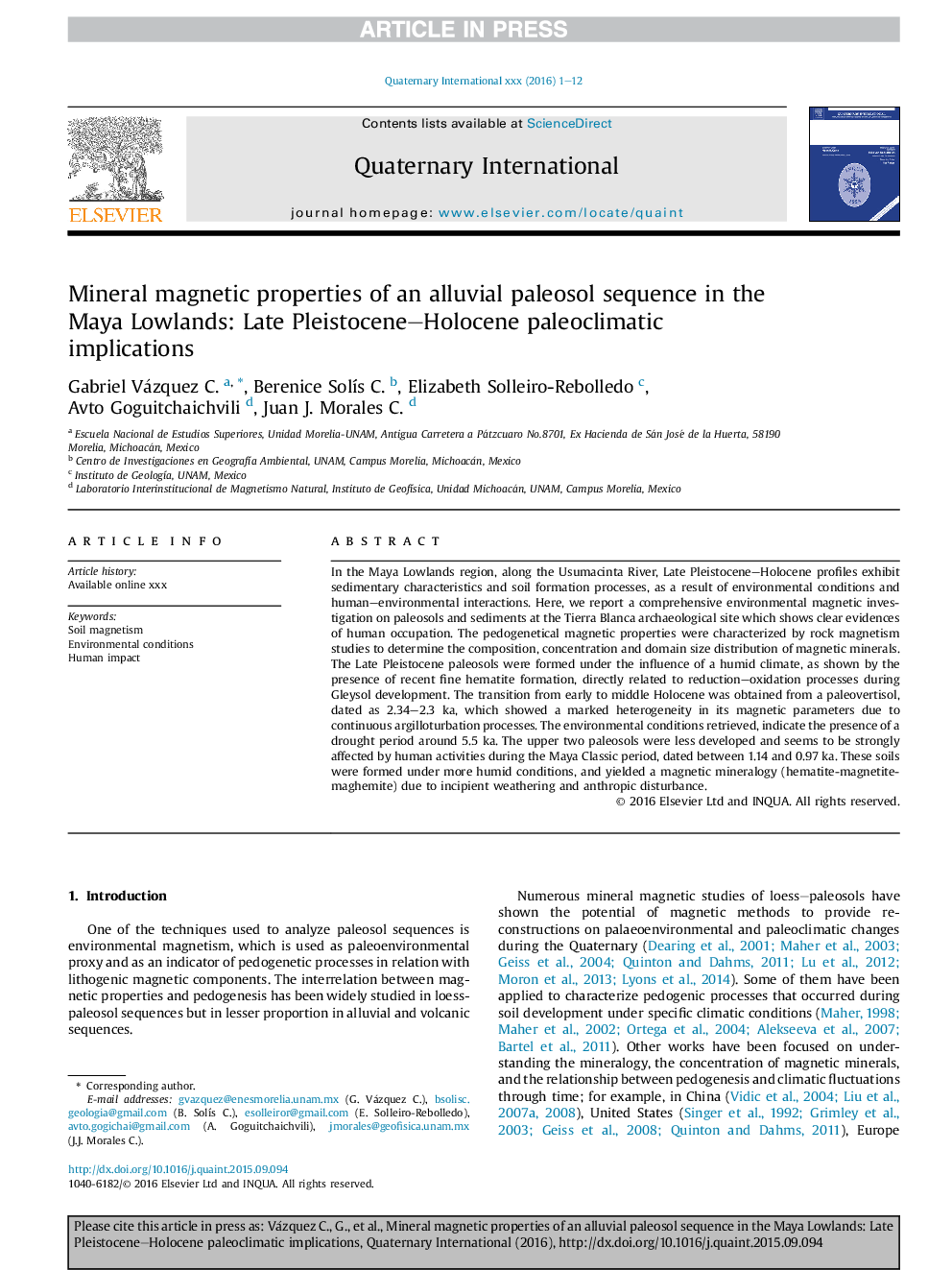| Article ID | Journal | Published Year | Pages | File Type |
|---|---|---|---|---|
| 5114036 | Quaternary International | 2016 | 12 Pages |
Abstract
In the Maya Lowlands region, along the Usumacinta River, Late Pleistocene-Holocene profiles exhibit sedimentary characteristics and soil formation processes, as a result of environmental conditions and human-environmental interactions. Here, we report a comprehensive environmental magnetic investigation on paleosols and sediments at the Tierra Blanca archaeological site which shows clear evidences of human occupation. The pedogenetical magnetic properties were characterized by rock magnetism studies to determine the composition, concentration and domain size distribution of magnetic minerals. The Late Pleistocene paleosols were formed under the influence of a humid climate, as shown by the presence of recent fine hematite formation, directly related to reduction-oxidation processes during Gleysol development. The transition from early to middle Holocene was obtained from a paleovertisol, dated as 2.34-2.3Â ka, which showed a marked heterogeneity in its magnetic parameters due to continuous argilloturbation processes. The environmental conditions retrieved, indicate the presence of a drought period around 5.5Â ka. The upper two paleosols were less developed and seems to be strongly affected by human activities during the Maya Classic period, dated between 1.14 and 0.97Â ka. These soils were formed under more humid conditions, and yielded a magnetic mineralogy (hematite-magnetite-maghemite) due to incipient weathering and anthropic disturbance.
Related Topics
Physical Sciences and Engineering
Earth and Planetary Sciences
Geology
Authors
Gabriel Vázquez C., Berenice SolÃs C., Elizabeth Solleiro-Rebolledo, Avto Goguitchaichvili, Juan J. Morales C.,
